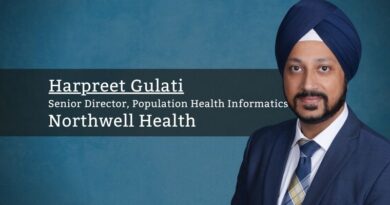What does it take to get a population health project approved?
By Richard Hom PhD MPA, Optometric Director, Blue Cross and Blue Shield
We all want to know how to spend our health care dollars to achieve the best outcome at the lowest cost. Getting there will require the right mix of strategy, technology, and people. The rewards are worth the effort because predicting health outcomes (also called population health /management or “PHM”) means that there will be a greater likelihood of healthier people. A population health management (PHM) strategy reduces the risk of serious disease by modifying behavior and health practices.
An example of a PHM strategy is diabetes, a chronic condition without a cure. Each year the severity and costs accumulate for sufferers of diabetes. Any strategy that can calculate and predict the costs of diabetes can reduce the cost and progress of diabetes. Harvesting patient visit and billing data is essential. The cost to care for that number of individuals is ongoing and can be lowered if any identified risk factor can be modified or lessened before the onset of diabetes.
PHM strategies can either use third-party vendors or internal teams to plan a PHM strategy. Both are capable of being successful. In either approach, success is enhanced if the following attributes or factors are included: Patient and billing data, medical conditions that are serious and costly, individuals who may be at risk for a disease, measurement to determine effects of any intervention, and an education program to encourage modification of behavior or practice. Of course, having these attributes will not guarantee results.
There are obstacles to success. First, patient medical and billing data are collected from many doctors from many patients and after each visit, sent to a third-party payer. Each claim goes to different computers, even if the claims are going to the same company. These separate computers are like grain silos except they contain information. They act like silos where information from one silo cannot be shared with information from another silo.
Second, business-led studies are perceived as less credible than academic projects. Business projects are funded and managed by the business and conveys the possibility of undue influence on either the research design, methods and analysis. The absence of any third-party peer review creates an additional feeling of bias. The study design itself can suggest conclusions that are not warranted. For instance, an observational study will differ from an experimental one where an outcome might be affected by a duration of the study or the selection of the factors being studied.
Lastly, business studies tend to use billing rather than actual patient data. Because third-party payers may not have access to electronic medical records, the billing data is the sole source which is an indirect description of clinical data. Billing data lacks consistency because individual doctors will bill differently from one and another, even for the same kind of medical condition. Such variances can cause errors.
A successful PHM strategy needs the thoughtful use of technology. The tool should make gathering and analyzing information easily and quickly. One such tool is a data warehouse, a software application that collects data from many sources and stores them separate from the normal day-to-day operational database. The separation of the data is crucial because the data warehouse serves as a “single source of truth” for all researchers and ensures that everyone is using identical data. Often searches of data can be extensive and should not be performed on an operational database because of its effects on everyday users. Tools that query and analyze the data are also important. These software applications perform computations that can describe data enough to determine associations and even imply conclusions.
There are key elements that can shorten and simplify the PHM strategy process. Both the technology and the methods require synchronicity and should match the complexity of the project. Simple and short-term projects may use simpler hardware and software tools that are pre-existing and without additional investment. The appeal for sizing and scoping a project to minimize additional investment is high.
When deeper analyses are planned, then an agreement between the clinical and business leaders may quicken any approval for additional funding, although a guarantee for such approval is never assumed or implied. When the complexity of a project is present and new technology is needed, it is likely that the timeline for the project be adjusted to account for procurement and training on the new technology. New technology procurement can affect the return on investment (ROI) a comparison of expected savings and expenses. Even when the ROI is favorable, an approval is never guaranteed or implied.
In summary, the benefits of PHM can reduce the severity of disease and the overall costs of care. Success includes the right project scope, the right kind of data, the appropriate technology and the best mix of people.



